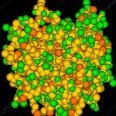Swift Action Needed To Curb March Of Invasive Species
-
Recently Browsing 0 members
- No registered users viewing this page.
-
Topics
-
-
Popular Contributors
-
-
Latest posts...
-
1
-
22
THAILAND LIVE Thailand Live Monday 28 July 2025
Armed Forces Summary of the Conflict on 27 July Picture courtesy of Royal Thai Armed Forces Headquarters (Facebook) The Royal Thai Armed Forces have issued a detailed summary of clashes along the Thai-Cambodian border on 27 July, also raising concerns that Cambodia may be preparing for a major military operation ahead of any proposed negotiations. Full story:https://aseannow.com/topic/1368027-armed-forces-summary-of-the-conflict-on-27-july/ -
16
BKK train fares capped to B20 ... for Thai
I think you’re talking to the wrong person. I’m just responding to what SOMEONE ELSE has posted. My prerogative. Do you need a loan for bus fare? Are you still feeling “sick”? Silly me. I should of known my reply would attract the fan room dwellers. -
1
Thai - Cambodia Conflict Armed Forces Summary of the Conflict on 27 July
Picture courtesy of Royal Thai Armed Forces Headquarters (Facebook) The Royal Thai Armed Forces have issued a detailed summary of clashes along the Thai-Cambodian border on 27 July, also raising concerns that Cambodia may be preparing for a major military operation ahead of any proposed negotiations. According to a post on the official Facebook page of the Royal Thai Armed Forces Headquarters, the report, based on information from the Region 2 Army Operations Centre, confirms fighting across seven key areas, a slight decrease from ten on the previous day. Key Developments: • Chong Bok: Both sides remain heavily deployed. Intelligence suggests Cambodia is reinforcing Phu Makuea and Chong Anma. Thailand continues to hold positions based on operational map 1:50,000, while Cambodian forces are reportedly moving southward. • Phu Phee – Prasat Dontawal and Chong Ta Thao: Hostilities continue. Cambodian losses are believed to be significant, including the reported death of the commanding officer overseeing the area. • Front of Preah Vihear Temple: Skirmishes persist, with Cambodian snipers using the temple as a base to target Thai troops. Thailand retains control of Phu Makuea according to its operational plan. • Chong Chom: Cambodian forces shelled Thai civilian homes and attempted to deploy tanks near Chong Krang, approximately two kilometres from Prasat Ta Khwai. • Prasat Ta Muen Thom: Cambodian troops launched repeated offensives from the east. Thai forces responded with artillery fire, forcing a Cambodian withdrawal. Rocket Attack from Samrong At 06:30 on 27 July, Cambodia launched four rockets from Samrong airfield, damaging two Thai homes and killing five livestock. Thailand retained control of Chong Anma in Nam Yuen district, Ubon Ratchathani province. Cambodian forces continued attacks across several areas, including Chong Ta Thao, Preah Vihear, Phu Makuea, Chong Chom, Prasat Ta Khwai, and Prasat Ta Muen. The Thai military reported that Cambodia employed indiscriminate weaponry in violation of rules of engagement and humanitarian law, directly harming civilians. BM-21 Rocket Kills Thai Civilian A BM-21 rocket fired by Cambodia struck Saothongchai subdistrict in Kantharalak district, Si Sa Ket province. One civilian was killed and another injured. Thai military personnel provided first aid before transferring the injured to Si Sa Ket Hospital. Human and Material Toll (as of 27 July 2025): Civilians: • Dead: 14 • Critically Injured: 12 • Moderately Injured: 12 • Slightly Injured: 13 • Total Civilian Casualties: 51 Military Personnel: • Dead: 8 • Injured: 103 • Total Military Casualties: 111 Evacuation Efforts: A total of 139,646 civilians have been evacuated from high-risk areas into shelters across seven provinces, an increase of 3,720 from the previous day. Military Condemnation and Call for Public Cooperation The Thai Armed Forces expressed their deepest condolences to families affected by Cambodia’s cross-border actions, which were labelled as clear violations of Thai sovereignty and international humanitarian law. They also condemned the indiscriminate use of weaponry targeting civilians. The military further requested that the public and media refrain from sharing images of enemy casualties or disclosing operational details, citing national security concerns. The statement concluded with a reaffirmation of the Thai Armed Forces’ commitment to defending the nation’s sovereignty and ensuring the safety of its citizens. Adapted by Asean Now from Amarin 2025-07-28 -
7
Thai - Cambodia Conflict Cambodian Spy Suspect Caught in Surin – Three Accomplices Still at Large
It was a result of their misplaced paranoia. Surely when they spoke to him the first thing he would have said is something along the lines of 'got yo mo'fockin hands off me I'm Thai you knuckle dragging neanderthals' 😂 -
5
FBU Manila setup a phone appointment and they didn't call.
They never called. Nobody answers when you call during the set hours. I've emailed but no response. Can't do walk-ins. Hmmm. I guess this is the new social security MOP. Make it so difficult to get money out of them you give up. Lucky I don't need it at the present time and would actually prefer for tax purposes to get a lump sum payment for 2025 benefits in 2026. Good job Trump/Musk/doge.
-
-
Popular in The Pub



.thumb.jpg.d9f3e54432a0ae65f4d5beb0d2d122ce.jpg)




.thumb.jpeg.42eea318e3350459f0aaaa5460326bca.jpeg)



Recommended Posts
Create an account or sign in to comment
You need to be a member in order to leave a comment
Create an account
Sign up for a new account in our community. It's easy!
Register a new accountSign in
Already have an account? Sign in here.
Sign In Now